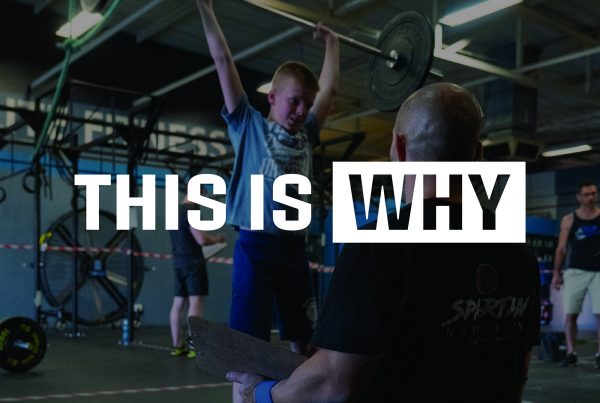Resting heart rate (HR), age-predicted maximum HR and HR training zones are commonly used by the general fitness and medical industries, and by some sports, to evaluate health, fitness and training efforts. HR zones are even used to guide training intensity for sports and general fitness. What do those HR numbers mean? More importantly, what are they founded on and are they of any use?
Maximum Heart Rate
Your age-predicted maximum HR is supposed to be 220 – your age. This is said to be the maximum heart rate (MHR) you can safely attain through exercise, regardless of your training status. For example, an obese 20 year old has an MHR of 200, whereas a 30 year old Olympic level decathlete theoretically has an MHR of 190. There’s your first clue that HR data means little – an athlete who’s taken years to qualify for their national Olympic team should have a lower MHR than a 20 year old who’s spent years eating shit while sitting on the couch? Not likely!
Where does that equation come from?
I’m not entirely sure, but it was fed to us by both the medical and exercise science departments since year one at uni, and to decades of students before that. So it’s no surprise that it’s used to widely. I do believe that the number came about through research evaluating exercise and heart disease, so if anything, it may be useful in the training of individuals who have heart disease.
Heart Rate Zones for Training
Have you ever trained with an endurance sports athlete who used an HR monitor? They’re constantly trying to adjust their pace – usually to make it slower – in order to keep their HR in the “aerobic zone” so they can go the distance without boinking. It’s similar to the advice you’ll get from a trainer at a commercial gym or the guidelines you’re given by health schemes – keep your HR at 60-70% of your MHR to stay in the “fat burning zone.”
[I’m genuinely having a chuckle while I read and write this, because those claims actually sound ludacris!]The image below is an example of these heart rate zones.
Let’s look at an example of these zones and what they tell us about performance. Consider a group of professional athletes all aged 25. In the group we have an F1 driver, marathoner, rugby athlete, baseball pitcher and tennis athlete, all of whom compete at the highest level.
F1 drivers have an average HR of about 160 beats per minute (BPM), which is similar to the average match HR of the tennis athlete and that is not far off from the marathoner’s average race HR. A baseball pitcher (who rarely does much work in a game) has an average game HR of about 175 BPM, similar to that of the rugby player. Interestingly, the average HR of a rugby referee is similar to that of the athletes’!
The fitness requirements of these comparative sports are vastly different, yet they elicit a similar HR response. Could a marathoner perform like the F1 driver if we were to throw them into the cockpit? Would a baseball pitcher go the distance in a game of rugby? It’s not a rhetorical question, the answer is no. There’s more to HR than just physical demands.
Although F1 drivers need to be physically fit, the heat and stress they’re exposed to raises the HR significantly. Similarly, the baseball pitcher’s senses are dialled before pitching the ball and that elevates the HR. Your HR during physical efforts tells us little to nothing about your physical abilities in that task. HR zones are therefore a poor guide for training intensity.
Heart Rate and Training Intensity
A reminder about intensity: It is directly defined as power output which is determined by the amount of work completed in a given time.
Power Output (Intensity) = Work / time
Here is where the HR zone chart starts contradicting HR zone guidelines. Let’s use the most common example to examine this – the endurance athlete. In general, endurance athletes are to keep their training HR in zone 3 to improve aerobic fitness while limiting muscular fatigue. Yet the chart shows that training in zone 5 maximises performance? This is why so many recreational endurance athletes “boink” on race day. That means they “hit the wall,” start cramping up or experience debilitating muscular fatigue. It’s because they focus on preventing themselves from blowing out in training by limiting HR, only to be exposed to a far greater intensity on race day.
Intensity rules, especially when you learn how to adopt very good movement patterns under fatigue.
What about the F1 driver from above. His MHR should be 195. His average race HR is 160 BPM, about 82% of his MHR. According to the HR zone chart, he should only last 2 – 10 minutes. Instead, he is as lit up as his instrument panel all the way through the race!
How does he do that and how do we apply those principles in YOUR training? We use interval training. We get your HR really high, many times higher than what your MHR should be, add in some rest and then repeat several times. Or, we maximise your power output (intensity) in training by keeping the duration of your exercise bouts where there is greatest carry over for all energy systems. And then we ensure that there is a healthy dose of structured variance to keep you working beyond the realms of your experience and comfort.
On the training topic, your HR monitor cannot accurately calculate your caloric expenditure from exercise. The equation is complex.
—-
So, HR is a poor indicator and guide for intensity, training effort and performance – even if you are a true endurance athlete. Regardless of your sport or health goals you simply need to develop the capacity to go harder for longer, and your HR isn’t going to tell you if you’re doing that or not.




